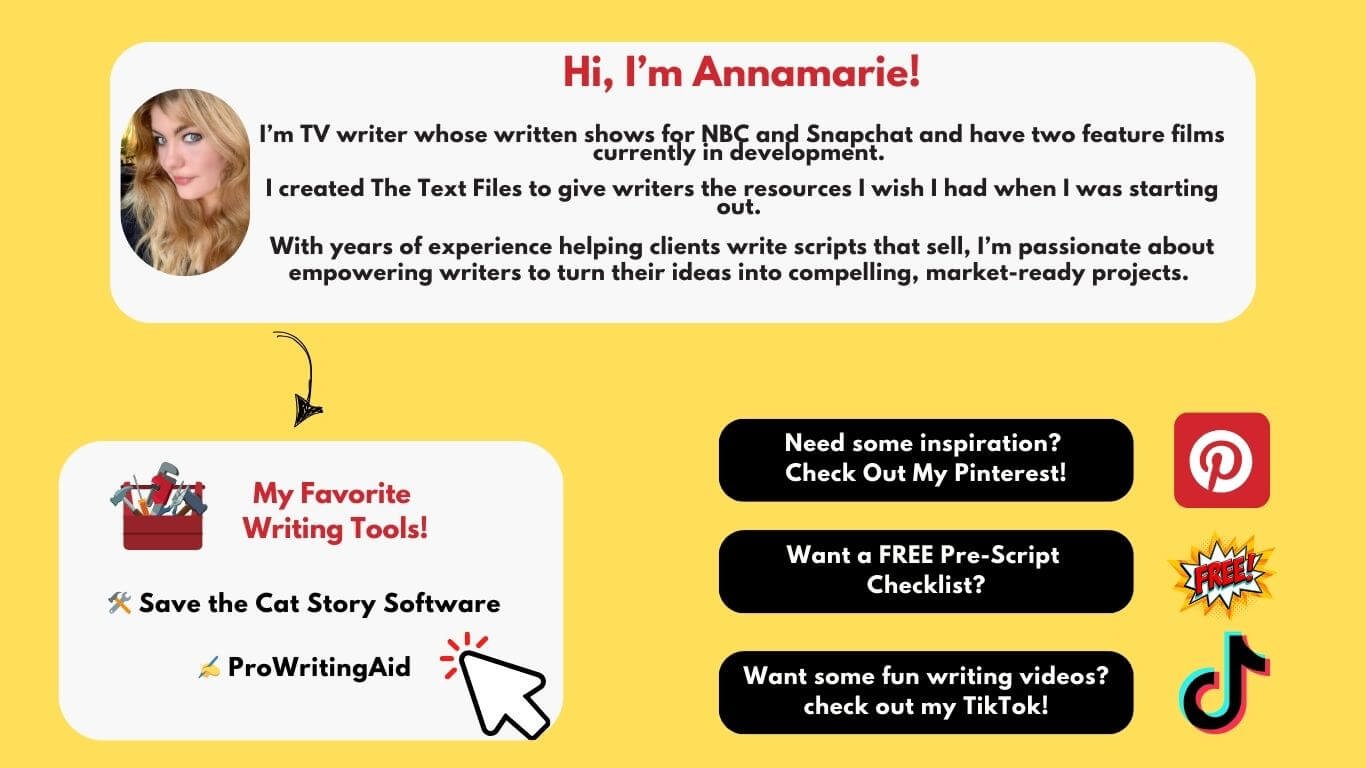Writing a Novel? Think Like a Screenwriter: Why Structure Matters
We’ve all heard it before: “Just write! See where it goes!” Or no shade to Anne Lamott, “take it bird by bird” or the dreaded (and this is the most straight-to-jail saying in my humble opinion) “If you write a page every day you’ll have a novel at the end of the year.” Um… NO YOU WON’T.
You’ll have wasted a year and have 365 pages of not a novel.
As someone who’s lived through the heartbreak of endless rewrites and computer-crying sessions: writing without a plan is a one-way ticket to frustration. My first novel took three years and countless revisions. It was only because by a miracle I was able to land a script writing job and learn a whole new set of skills that I was like WAIT A SECOND! I did the book writing thing all wrong.
Here’s my message for you my future bestselling authors: professional writers do not “pants.” Okay, sure maybe some have or do, but imagine you pants a book that becomes a bestseller. Amazing! Then your publisher needs the sequel by fall and you panic! Why? Because you have no clue HOW you wrote such a good book and now whatever magic and instinct and seat of your pantsing you relied on now has the enemy of creativity knocking at your door with a deadline: COMMERCE.
So let’s spare the hypothetical tanking your sequel and learn some skills that will keep you happy and actually save you time while writing better books.
In this post, I’ll break down how applying the principles of screenwriting to novel writing can save you time, stress, and potentially three years of your life. Here’s why screenwriting structure is the hidden gem novelists have been missing out on:
The Secret to Writing a Novel with Screenwriting Principles
Forget the “just get it on the page” mentality. Screenwriters know structure is everything.
By working within specific story beats and focusing on pacing and character development, you create a story that works. Here’s why:
1. Screenwriters Understand That Structure = Story (Not Filler)
For screenwriters, structure isn’t just a technicality—it’s what creates momentum.
Screenplays are lean, stripped down to only the essentials, because every single word must move the story forward.
In the book Save The Cat! The Last Book on Screenwriting You’ll Ever Need, Blake Snyder defines beats, story structure, and what makes a scene essential, giving every moment a purpose.
Imagine if every chapter in your novel served that purpose too. Structure turns ideas into a sequence that hooks readers, keeping them invested from start to finish. Think of structure as your roadmap that, yes, lets you take creative detours but ensures you don’t lose your way.
If you want your novel to avoid meandering, pick up Save The Cat!! It’s a gift to your future self—and any writer you know!
2. Character Arcs Are Your Real Story (Even When You Have an Epic Plot)
One of the biggest mistakes we can make as writers is putting plot over character. But in screenwriting, plot exists only to reveal character. It’s the choices, conflicts, and transformations of our characters that keep viewers hooked for multiple seasons or sequels.
In Save The Cat!, Snyder argues that character and story are inseparable. This realization changed everything for me as a novelist.
Now, instead of letting my characters “develop naturally” (a process that used to take me three rewrites minimum), I build every scene and plot point around how it challenges or changes my character.
The story writes itself when you know what your character truly wants and how each choice moves them toward—or away from—it.
Make character development easier, and see how it transforms your writing. Craft the screenplay you’ve always known you could write with the step by step software from Save the Cat!
3. Structure Doesn’t Restrict Creativity—It Maximizes It
I used to think structure meant “rules,” which went against every reason I wanted to write in the first place. But after transforming my novel into a screenplay, I realized structure is actually freeing.
Once you know the beats and know how each scene moves your story forward, you can focus your creativity where it counts. You aren’t wasting time figuring out “what happens next.” You’re fine-tuning details and diving deep into the emotional beats that make readers fall in love.
Structure allows you to channel your creativity more effectively—and Save The Cat! is the perfect guide for learning how to do this. Structure gives you the guardrails to keep the story focused while letting you add layers, explore subplots, and make your world feel real and dynamic.
Discover how structure can fuel your creativity, not restrict it. Save The Cat! could be your new favorite tool.
4. Avoiding the “Saggy Middle” with Screenwriting Tactics
One of the most common complaints about novels is a slow or “saggy” middle where the plot stalls. Screenwriters, however, work within tight limits that force them to keep the story moving. Snyder’s “Save The Cat!” beat sheet helps writers pace the story for tension and impact, something we novelists can hugely benefit from.
With screenwriting techniques, I learned to keep the stakes rising and my characters evolving, so readers stay engaged and my scenes serve a purpose.
I stopped over-explaining, “filling space,” and writing scenes that didn’t need to exist.
Tackle that “saggy middle” with Save The Cat! Keep every page working toward your story’s goals and hold your reader’s attention.
5. Screenwriting Makes You Ruthless with Edits—And That’s a Good Thing
When I wrote my first novel, I had entire chapters I couldn’t bear to cut, even if they didn’t really add to the story.
Screenwriting taught me to be ruthless in the best way: if a scene doesn’t serve the story, it has to go.
This was painful at first but ultimately freeing. Save The Cat! teaches exactly how to make these tough calls while keeping your story tight and effective.
Edits no longer feel like a loss. They’re a way to refine my work to its best form. Now, I’m confident that every scene has earned its place, and that my novel is finally the story I set out to write.
Learn how to be ruthless (but loving) with your edits. Save The Cat! will show you how to prioritize what matters in your story.
Ready to Write Your Novel Like a Screenwriter?
After I turned my novel into a screenplay, my approach to storytelling transformed. Now, as I write my new novel, I can already see it coming together faster, better, and with less frustration. Save The Cat! gave me the tools to understand structure and character at a deeper level, and I’m confident it’ll do the same for you.
Whether you’re a novelist, screenwriter, or both, learning the fundamentals of screenwriting will change how you write stories—forever. So why wait? Grab your copy of Save The Cat! and let your storytelling journey take off.
And hey, if you’re curious about how astrology can add layers to your characters, check out my post on creating memorable characters with astrology. It’s all about finding tools that give your writing an edge.
Happy writing!

THIS POST MAY CONTAIN AFFILIATE LINKS, MEANING I GET A COMMISSION IF YOU DECIDE TO MAKE A PURCHASE THROUGH MY LINKS, AT NO COST TO YOU. PLEASE READ MY TERMS OF USE POLICY FOR MORE INFO. (And PSST! YOU can get paid for your blog content with Share A Sale!)Ready to get started on your next (or first script)? I’ve created a FREE Essential Pre-Script Checklist. Sign up below to download instantly!
You ready?
Loved this post? Pin it to Pinterest so you can revisit it later!









